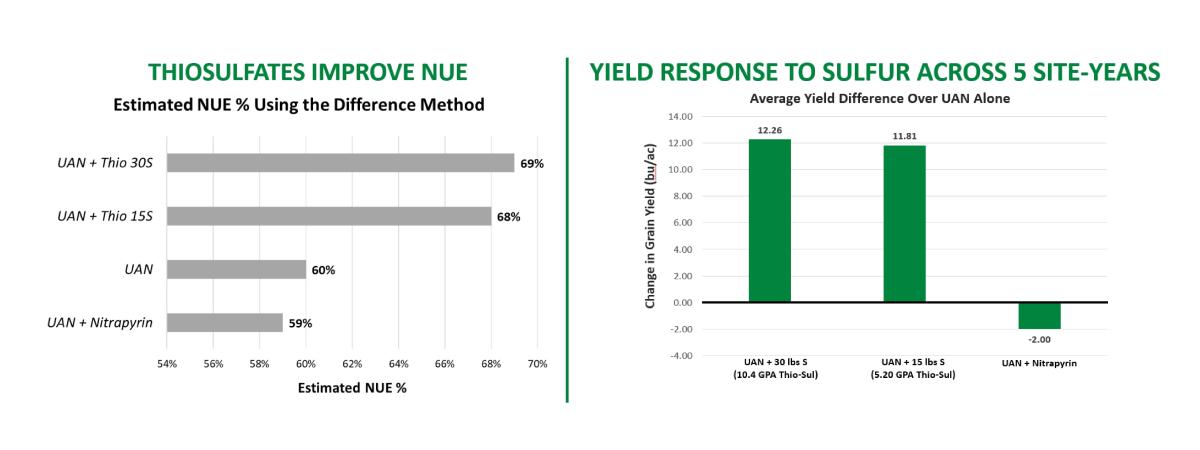
Webinar Replay - 'How Thiosulfates Can Improve Nitrogen Use Efficiency and Help Maximize Yields'
Watch Full Webinar
Dr. Zack Ogles and Dr. Elizabeth Lemings discuss the continued research with Auburn University, revealing that thiosulfates, when used at higher rates, can significantly slow the rate of nitrification compared to commercially available nitrification inhibitors. With rising fertilizer costs and growing environmental concerns, protecting your nitrogen investment has never been more important.
Summary
The webinar details the crucial role of thiosulfates in enhancing nitrogen use efficiency and maximizing yields. By mitigating nitrogen loss pathways like leaching, volatilization, and denitrification, thiosulfates protect growers' investments and the environment. Through comprehensive lab research and field trials, thiosulfates, like Thio-Sul®, have demonstrated their effectiveness in slowing nitrification, increasing profitability, and boosting nitrogen use efficiency, ultimately benefiting growers and promoting sustainable agriculture.
Key Takeaways
- Twin State Inc. field research in the Midwest at five different sites showed that when banded with UAN, Thio-Sul was effective in slowing nitrification for 20-30 days depending on rate.
- When UAN was combined with 30 lbs of sulfur from Thio-Sul, yield increased by 12.26 bushels an acre when compared to UAN alone.
- Including 30 lbs of sulfur from Thio-Sul with UAN in banded application was as effective or more effective in slowing down nitrification compared to Nitrapyrin.
- 15 and 30 pounds of sulfur from Thio-Sul, combined with 180 pounds nitrogen from UAN, led to an increase of 8-9% in nitrogen use efficiency when compared to UAN alone.
- The 12.26-bushel increase with 30 pounds of sulfur from Thio-Sul equated to an increased profit per acre of $44.39, and the 11.81-bushel increase with 15 pounds of sulfur from Thio-Sul equated to an increased profit of $48.87 an acre, assuming current market conditions.
